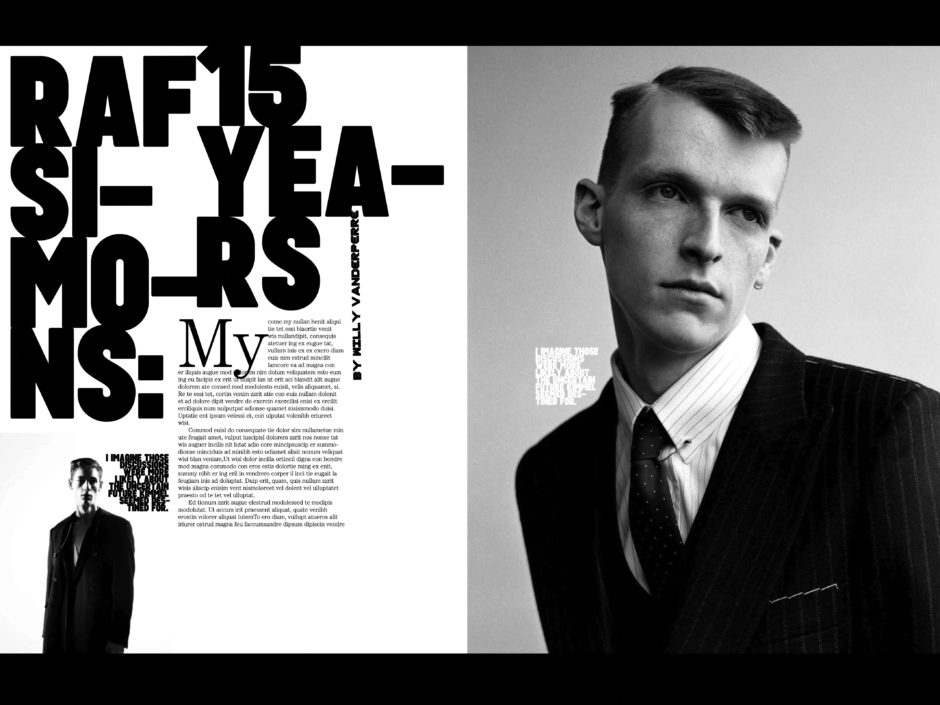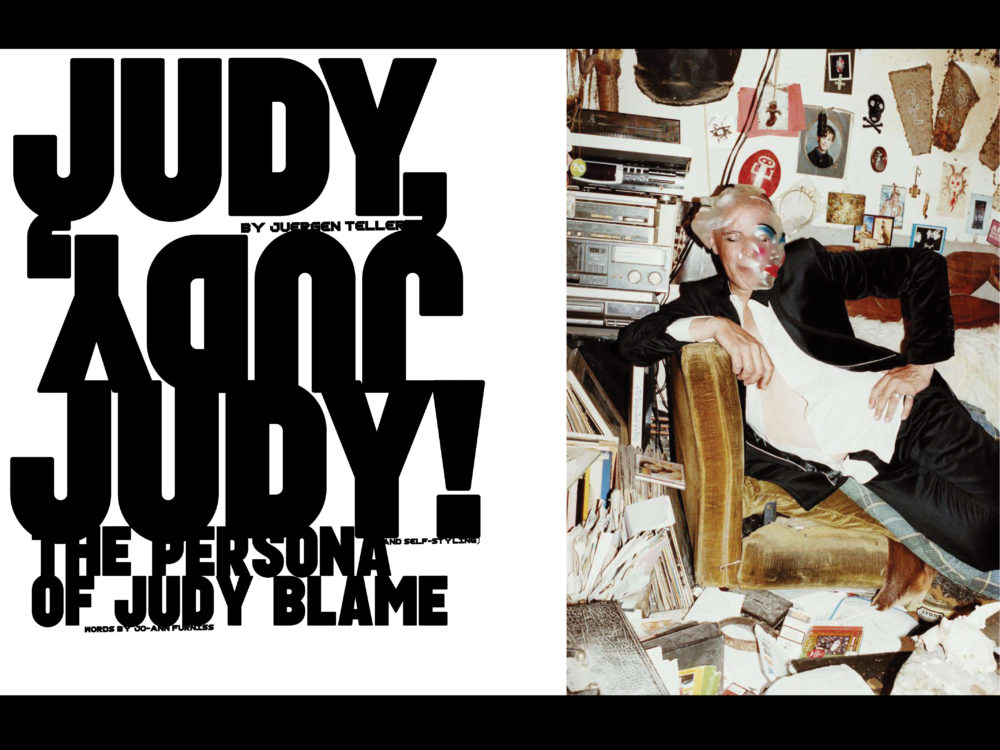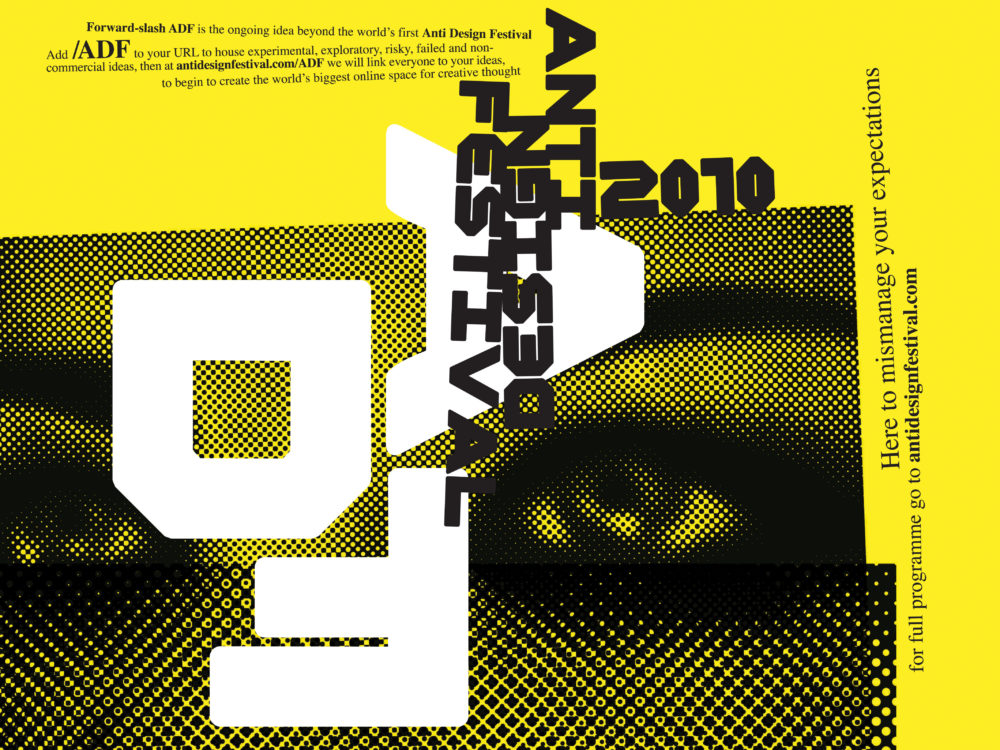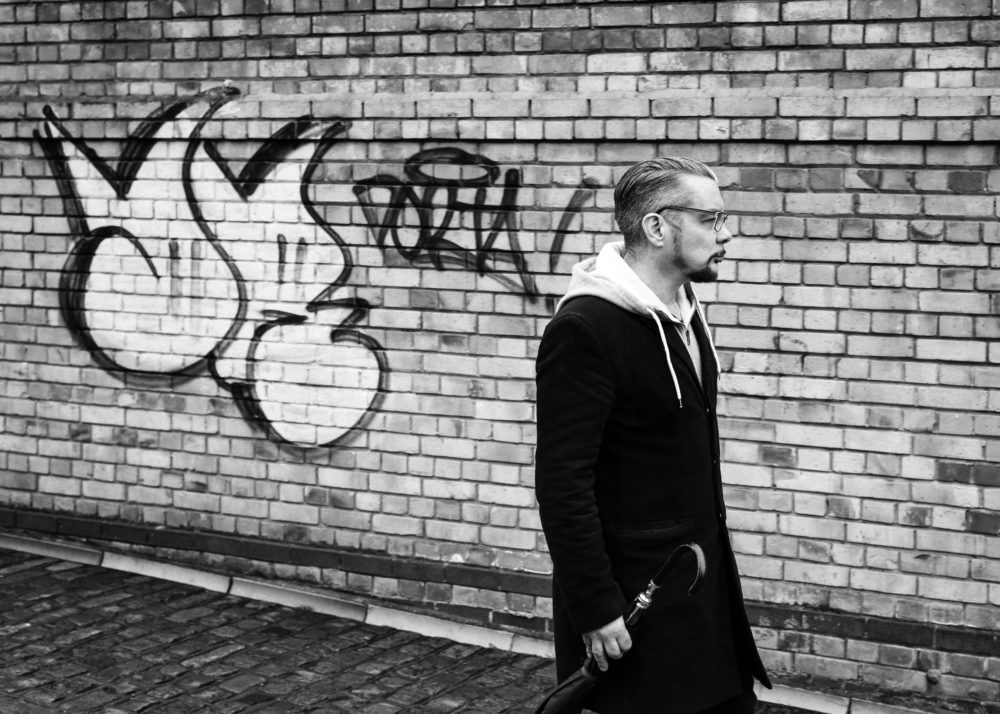Capturing the zeitgeist of the 1980’s, designer Neville Brody’s style set the tone of graphic design for the decade and beyond. Known for his work with seminal magazine The Face, and men’s style bible Arena Homme Plus, Neville Brody design & style has covered album sleeves and his type systems are admired throughout the world.
Are there any rules or habits that help you do your job more efficiently?
I don’t think it’s about doing the job more efficiently, but more effectively. This is predicated on the basis that you are aware of your intention, that you are clear about the purpose behind what you are creating. That can be to develop a system to help a client operate better, like a typeface family or broad set of design tools; an attention-holding image or piece of typography that has a clear message to communicate; or an experimental project that pushes boundaries and establishes new thinking. The other key component to working effectively is to ensure that there has been a period of deep research before jumping in with creative exploration. This always ensures a context for our work and creates a better sense of tension or alignment with the viewer or user.
Out of all the projects you’ve worked on what has given you the most satisfaction?
I would say Arena Homme Plus. I designed three issues of the magazine in 2009 and 2010, and it was the first time I’d worked in editorial for many years. In magazine design, you’re able to use the pages and flow of the magazine as a blank canvas that can evolve a visual narrative or line of enquiry. You set up core rules and a framework, but make sure that they are not too rigid. Then you use the space to improvise and try and break the rules you’ve set up by pushing them as far as they can go. Sometimes they do break and fall apart, but that adds to the energy. With AH+ I enjoyed working with the photographers to understand how we could dynamically create stories through how images were juxtaposed, and the movement and visual poetry I was able to create on the page. Each issue evolved the typographic and textual story from the previous issue to create a complete cycle.
You recently mentioned that designers should take more risks and help draw attention to social issues. What do you think is the lasting responsibility of designers to the public?
As translators of ideas, we imbue everything we do to a certain extent with our own interpretations. Any form of communication is inevitably political, in that it affects the way we see the world in some way. Designers have to understand and realise the responsibility that comes with this, and the trust our communities place in us. As such, we have a responsibility to be aware of the consequences of our output, whether positive or negative.
Today’s design community faces a rising wealth gap, climate change, shifting paradigms of nationalism, and myriad other challenges. How can designers rise to the challenge of creating a more positive future?
Where possible, we can apply our skill sets to promote beneficial ideas, as well as being conscious as to how our work itself might impact the world. How can the work we do better embrace inclusivity and diversity? Can we encourage a more creative, less conformist cultural environment? Education is key here, and we have the opportunity to actively feed into the dialogue around change and social benefit.
At a time when Britain is estranged from its European neighbours, what are new ways we can work together?
I have always thought of myself as a European, and this current climate will only serve to strengthen that. How, in this modern world, can we be so parochial and isolationist? Thankfully, there are many bemused Europeans who still consider us as compatriots and colleagues. I believe and hope that, culturally at least, we will continue to exchange ideas and thoughts in culture, education and social imperatives.
What is influencing you at the moment?
I think the main source of inspiration for me continues to be music, particularly jazz and more experimental creators. This seems to be one of the free-est areas where ideas can still be explored unfettered by political doctrine and conservatism. The other source of inspiration has always been other global cultures, ones we should respect as opposed to try and change.
You have been influenced by punk attitude as well as the work of William Burroughs. Is this rebellious spirit something that is lacking in today’s design and creative community or can it still break though?
Like the history of radical and experimental thought, the main thing about these philosophies is that they both embraced the idea that anything is possible, and that limitation and belief were simply constructs to be ignored in the pursuit of living ideas.
In developing his cut-up technique, Burroughs in particular applied mechanisms that allowed us to imagine thoughts and ideas beyond our normal capacity. What we experience today is an increasingly populist culture driven by fear and quantitative ambitions, that seems to exclude any sense of difference or risk. I believe that this will change, that there is still the desire to take creative leaps and explore non-populist ideas.
You’ve been quoted in the past as saying: “London has a particular set of politics and cultural influences that have been absolutely instrumental in developing the work that I do.” How does the UK and London influence your work today?
London is still an amazing, frustrating, inspiring place! So multicultural, unpredictable and possible. It is often like having the whole world at your doorstep every day. You can live life at any level here, quiet or fast, cultural or recluse.
What’s the most important piece of advice you have received as a designer that’s helped you?
When I was at Hornsey doing my foundation course, my tutor then suggested that the difference between an artist and a designer was that a designer needs an external brief to react against, whereas an artist sets his or her own. It made me understand that a designer sets a new brief based on an external catalyst.
Neville Brody
Neville Brody is acknowledged as a seminal designer specialising in digital design, typography and identity. Neville Brody ‘s style & design as well as an insight and passion for pushing creative boundaries informs the work of Brody Associates, the collaborative creative agency he founded.
His work over three decades ranges from magazine art-direction, album sleeves and identities for cultural institutions to key strategic systems and typeface design for global businesses.
In 2018 Brody became Professor of Visual Communication at London’s Royal College of Art, continuing his long association with the College, having served as the the Dean of the School of Communication for seven years from 2011.
He is a Royal Designer – the UK’s highest design accolade – and past president of Design & Art Direction, which promotes creative excellence. He lectures globally on design and education.










